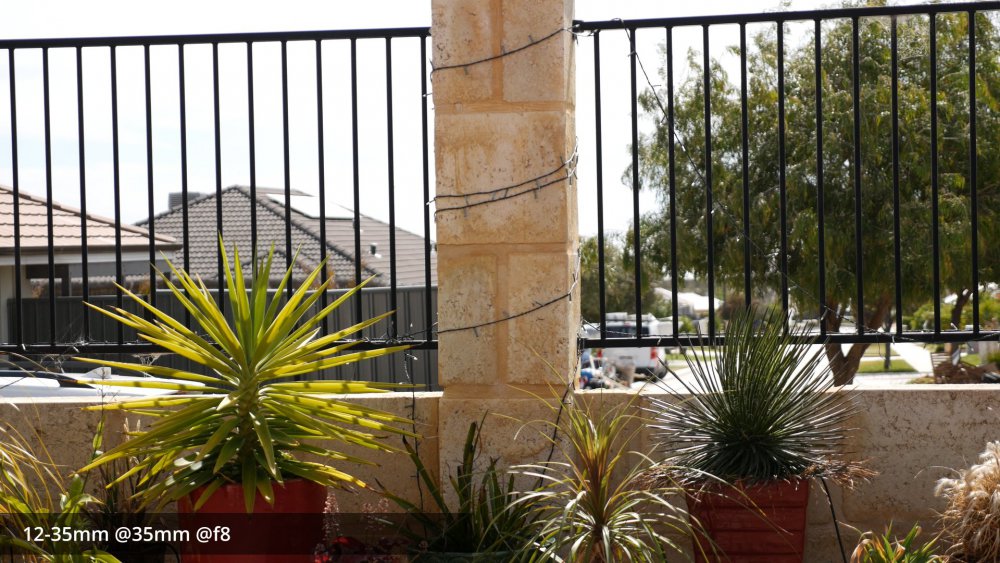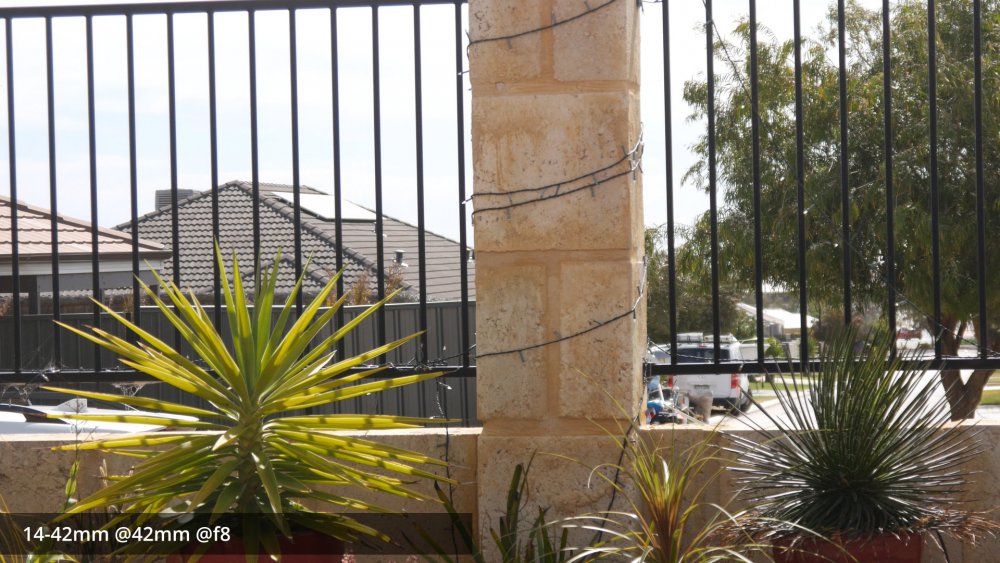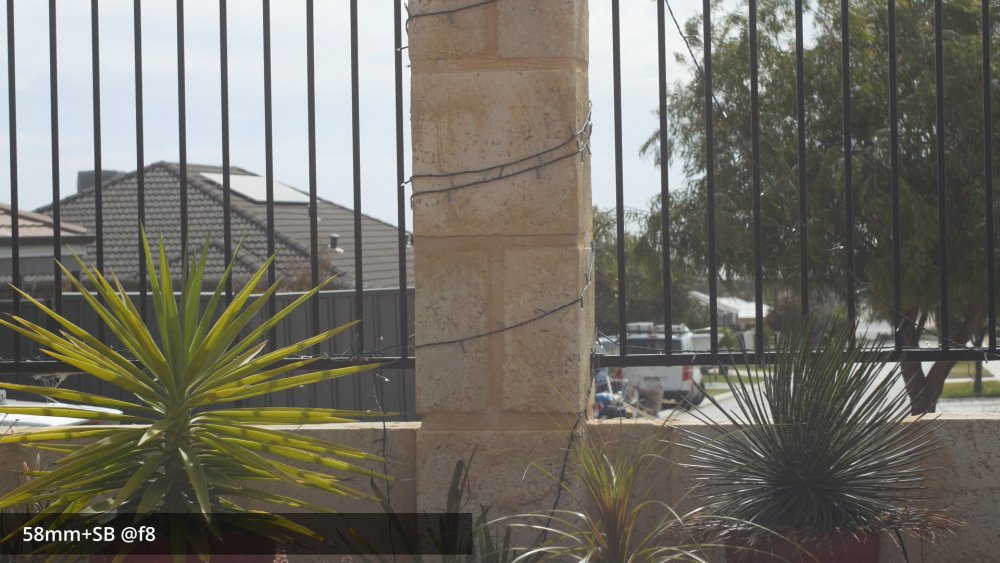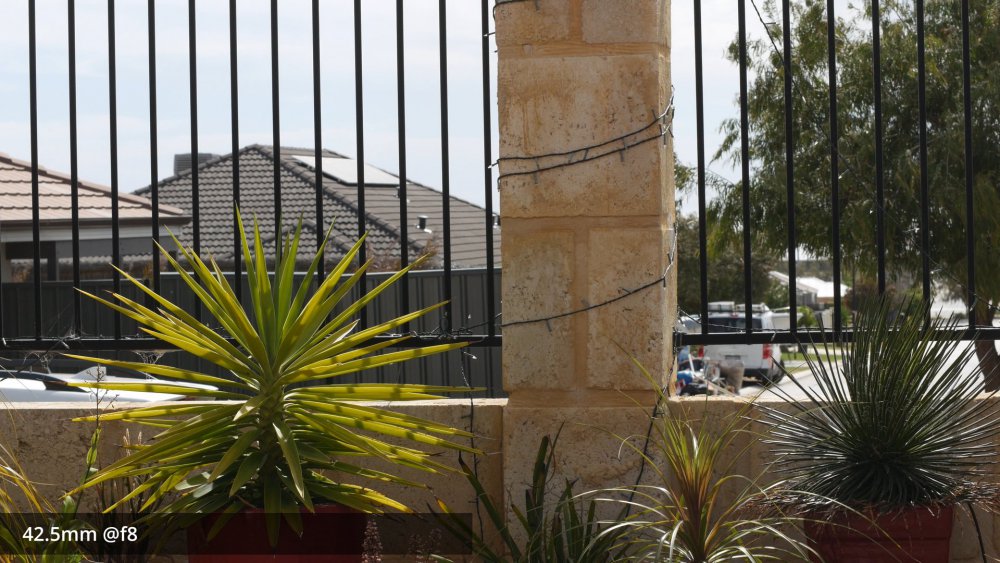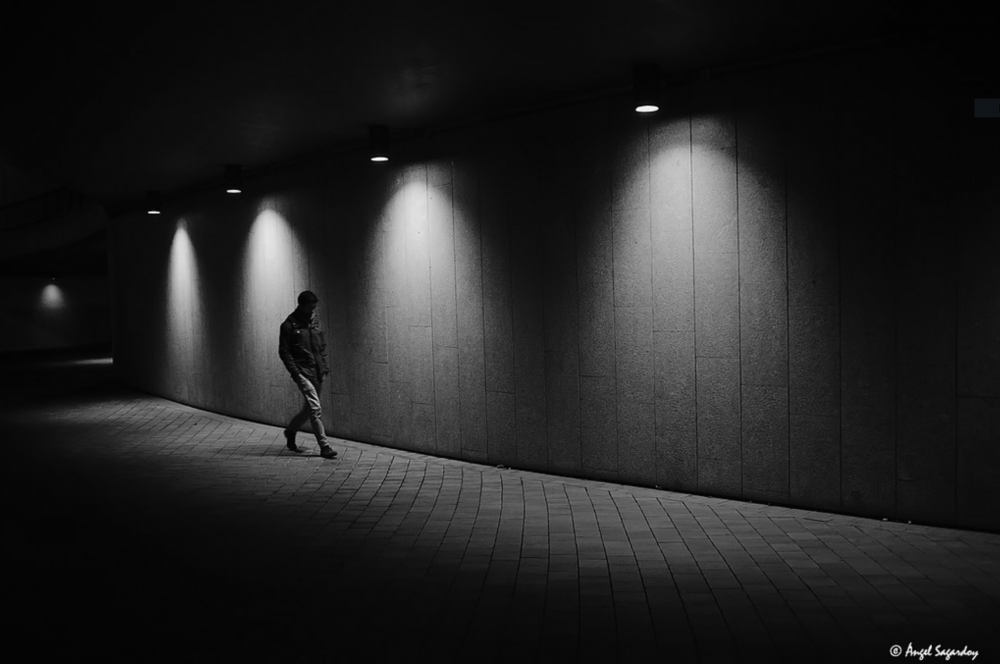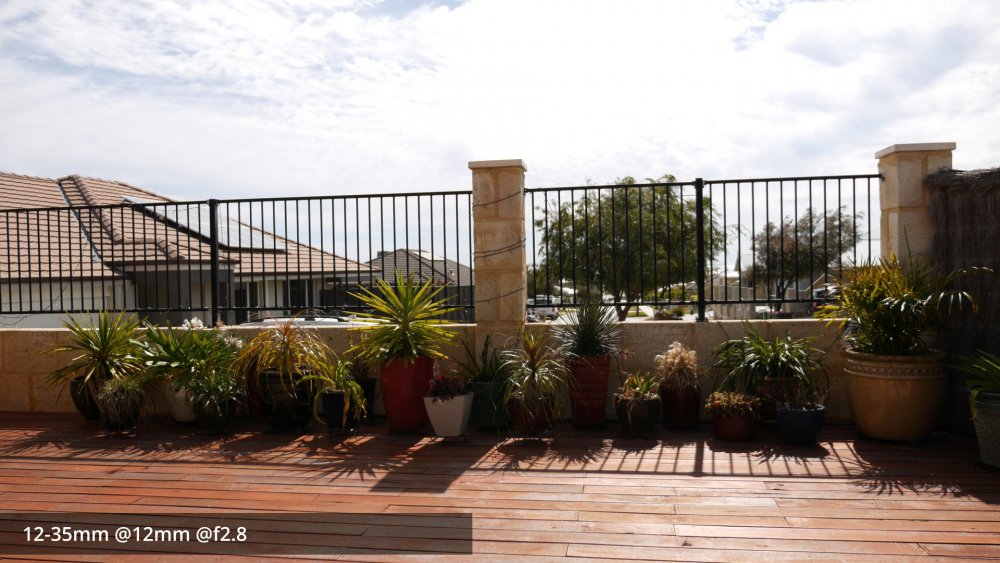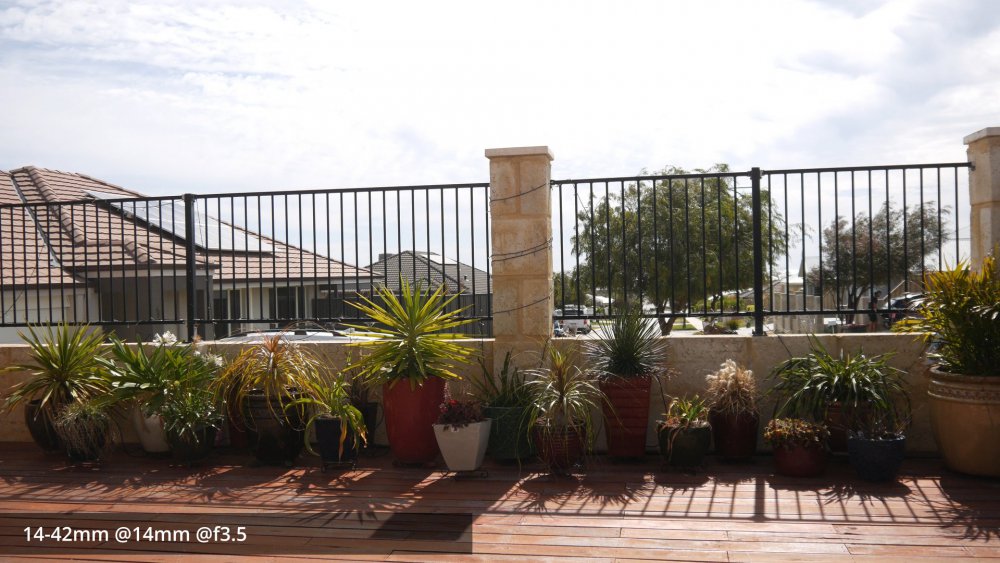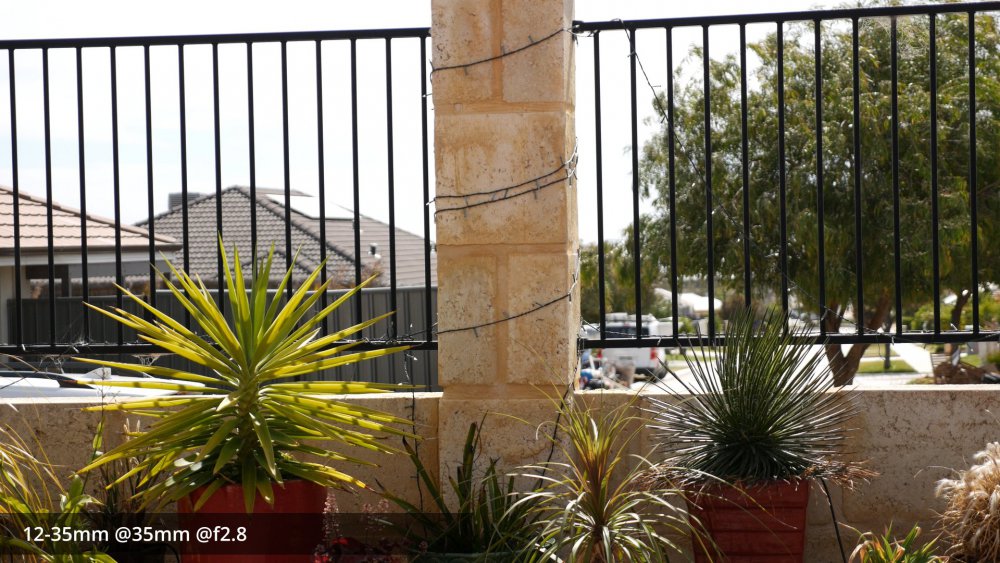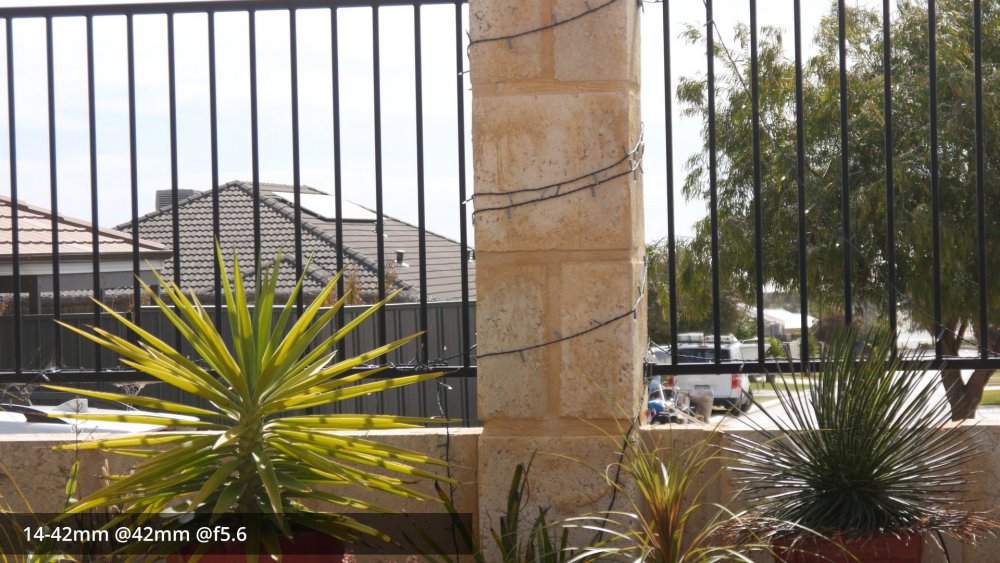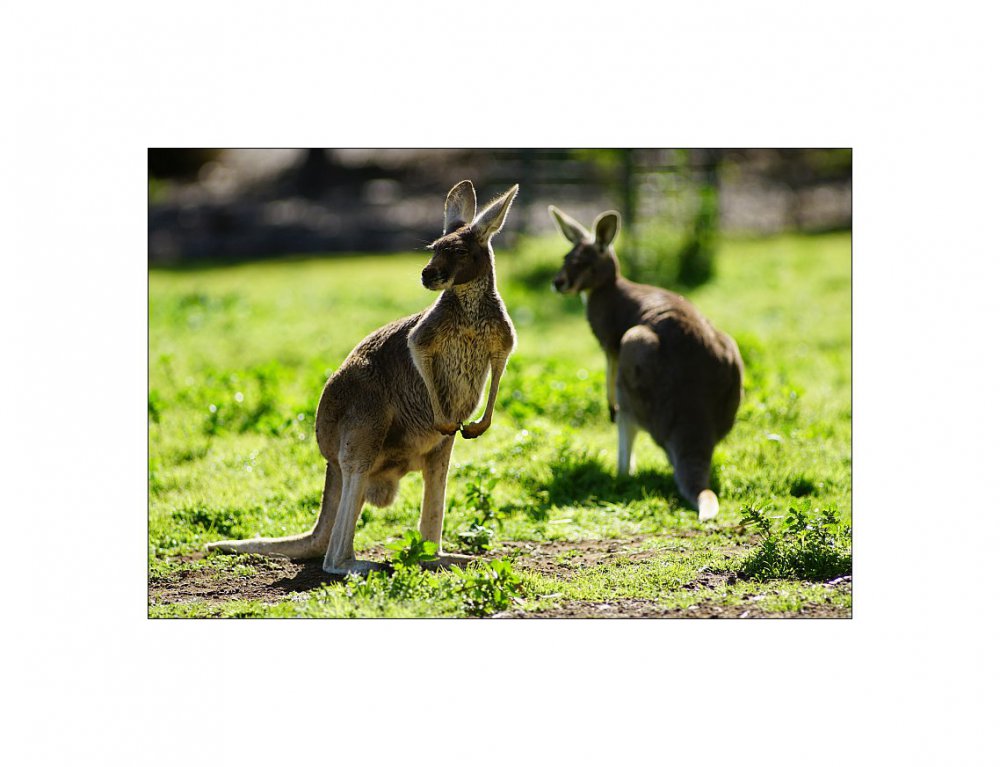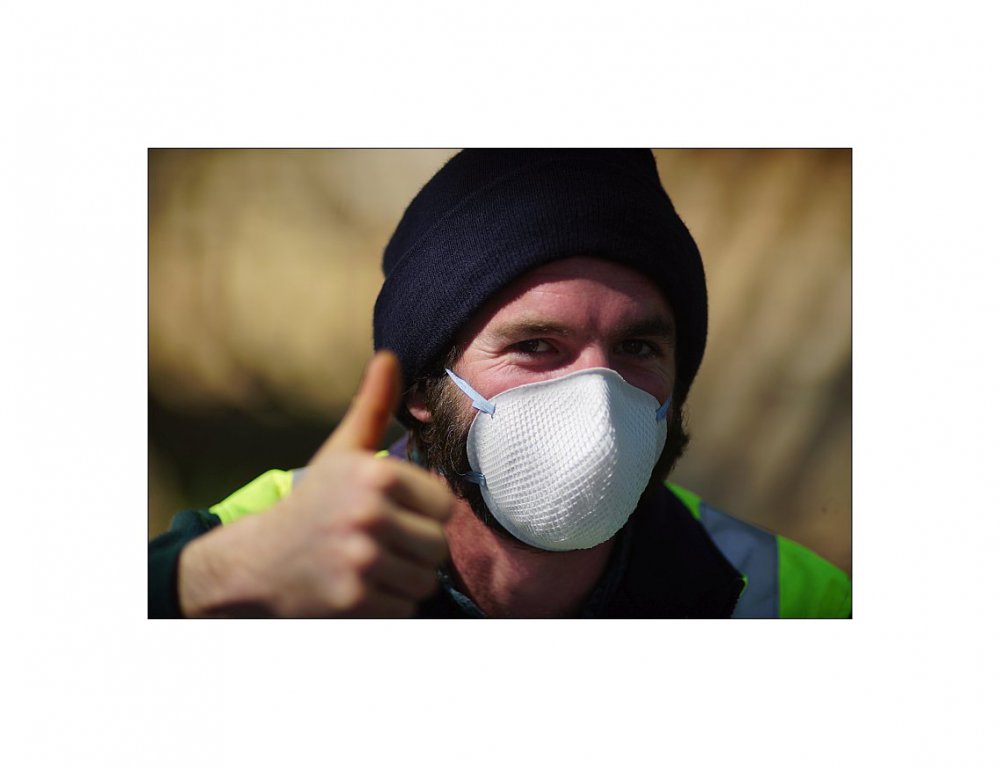Leaderboard
Popular Content
Showing content with the highest reputation on 11/15/2021 in all areas
-
6K Super35 CMOS Sensor, Dual Native ISO (helps when expanding the B4 image and losing a some amount of stops of light to cover the 4k crop of the sensor) 2/3" B4 Lens Mount & Active EF Mount 6K Blackmagic RAW Recording Records to ProRes H.265/264 (10bit 4.2.2 - Grant is call it H.265 SDI because of the higher specification) 12G-SDI Input & Output, Genlock/Timecode (Built-In Timecode Generator) 13 x Stops of Dynamic Range 2 x UHS-II SD, 2 x CFast 2.0 Slots (Dual Media Slots for Nonstop Recording) Built-In 2/4/6-Stop ND Filters XLR Inputs, 3.5mm Audio Output ProRes Recording up to 1080p120 USB Type-C for Recording Direct to External Media Disk Control Broadcast B4 Lens zoom and focus the through camera or remote over the internet via Blackmagic ecosystem. Includes Mini Shoulder Pad Includes Mini Top Handle Includes V-Mount Battery Plate Included DaVinci Resolve Studio Can stream via smart phone over the internet to (you tube etc) or to the Blackmagic ecosystem (camera, lens and coloring remote control via the internet possible). Can record simultaneously the video the is being feed to the stream at a hight codec simultaneously (future free software update) https://www.blackmagicdesign.com/media/video/6450385523 points
-
A manifesto for the humble zoom lens
filmmakereu and 2 others reacted to Mark Romero 2 for a topic
@kye Thanks for the post. Certainly makes us look in the mirror. For my real estate / architecture work, I like sharp(ish) lenses just because people are expecting to see detail. But for people, I think that most of the kit zoom lenses are fine for 4K. Convenient, inexpensive, relatively-lightweight (so they balance well on a gimbal and are less tiring to use). I would have a bit of a problem with the variable aperture if I zoomed more during shooting, but I don't, so I don't worry about it too much. One of the better kit zooms out there seems to be the Panasonic 20-60mm f/3.5-5.6, which has minimal focus breathing. (Some people would note that Panasonic has minimal focus.) Also, when youtubers say to get the "cinematic look" you need an ultra-shallow depth of field, I just want to punch them in the throat. These tend to be the same people who sell creative LUT packs that look like a dumpster fire.3 points -
Sony CineAlta Venice 2 8.6K Cinema Camera
Juank and 2 others reacted to androidlad for a topic
It's official: https://pro.sony/ue_US/products/digital-cinema-cameras/venice23 points -

A manifesto for the humble zoom lens
John Matthews and 2 others reacted to kye for a topic
Yes, this post was deliberately tongue-in-cheek, but it's also completely true and not joking in any way either. @Emanuel told me I'm allowed to disagree with myself and it makes me a poet instead of less credible, plus I can just randomly tag people in brand new threads, so I'm doing that too. You're welcome internet. Now you have no excuse for not getting out there and making something wonderful. (You never really had any excuses, so maybe you have a negative number of excuses now? There I am, being poetic again..) Enjoy.3 points -

A manifesto for the humble zoom lens
Mark Romero 2 and one other reacted to kye for a topic
Everyone seems to want high-speed high-resolution high-performance glass... is it sharp wide open? what does DXO say? how good is the bokeh? these questions are all over the net. OR.. Everyone seems to want vintage glass with their lovely coatings and swirly bokeh and corner softness... how does it roll-off the highlights? how is the edge softness? what is the colour rendering? how does it render skin? I recently tested a bunch of my lenses and I'm wondering if maybe they're wrong. Maybe cheap, modern, variable aperture, zoom lenses - the kit lens perhaps - is the best lens available. Why might I say such a thing? Here are some thoughts. They're cheap. Obvious, but true. In fact, if your camera was cheap enough, then you probably own one already - or if you own multiple cameras maybe more than one! If you don't already have one, but you know people who are into cameras, then you can probably get one off them for free. Best, in the real world (which is where I do all my shooting), often means most value. They're flexible and fast to use. They can zoom, which makes them flexible. I don't care how fast you are at changing lenses, I can turn a zoom ring faster than you can change primes. In fast situations, it can mean the difference between getting the shot and missing it. ENG cameras all had zooms, not a bag / case of primes. They can improve your edits. In slower shooting situations that flexibility can mean you get shots that you wouldn't otherwise get. Maybe it's not worth changing lenses to grab that shot, so you just don't, or maybe the composition isn't quite right because it falls between two prime focal lengths, or maybe the primes are just too heavy to carry all that way. Cheap zooms are lightweight plastic - built for speed. This means that when you get back to the editing room your kit zoom will give you more options. You'll have taken risks in shooting and some will pay off. The saying "spray and pray" is a deep insult which encourages people to only shoot what they know will work, but the phrase "happy accidents" betrays that sometimes we don't know what we'll want until we see it, in which case why not deliberately seek out what is new and unknown? They tell you that shooting with a prime will make you slow down and think about your compositions - maybe we should speed up and think less? Operate on instinct. If big-name directors are operating on instinct then why must the rest of us slow down and think more? The zoom will unlock the creativity that primes are actively blocking us from achieving. They can be optically poor. (Just like vintage lenses) Here's a little joke.. "What do you call a vintage lens with high optical performance?" "A modern lens" Vintage lenses are often quite crap. I'm meant to say "have lots of character", but in reality that character is just optical defects that we happen to like. Here are four images from my recent GX85 lens test. These are SOOC and not shot in controlled conditions, but the principle remains. So what are we looking at here? Well, there are two lenses where the colours are vibrant, they make the 100Mbps 4K (on a 1080p timeline here) look very sharp, and they are the Panasonic 12-35mm F2.8 zoom and the Voigtlander 42.5mm F0.95 prime. These are by far the most expensive lenses. The 58mm is the Helios 44M, a close relative of the 44-2 (the images are practically identical) and it's got that vintage look we all love. In fact, the diffusion from the vintage coatings improve the dynamic range of the camera by lifting the highlights. Despite being very sharp, its diffusion (coatings at work again!) takes the edge off the edges, giving a slightly organic look - it looks high-resolution but not high-sharpness. This is in the direction of how resolution from RAW-shooting cameras looks - there but understated. Here's the problem with the Helios though, it flares uncontrollably in direct sunlight. It's so prone to off-axis lighting that it's difficult to work quickly with. Plus, it's a prime and subject to all the above issues. Then, the mighty 14-42 kit lens. It has some of that vintage look going on. It's kind of like somewhere between the Helios and the other two. It raises the shadows a bit, but isn't uncontrollable in direct sun, and the edges are a little softer. A happy medium perhaps? It's also a zoom, has OIS, and if you break it you can just go get another one from a friend or on eBay or for $5 at a market somewhere with a GF2 with a dead battery. End of part 1....2 points -

A manifesto for the humble zoom lens
greenscreen and one other reacted to Emanuel for a topic
Indeed : ) I guess to infer Internet has to be a nasty location from people placing their invectives and frustrations is simply to add a reducer on something always welcome as an open and healthy discussion is. They haven't ever watched Citizen Kane, very likely ; ) BTW in behalf of this lovely thread, came to my mind now that vintage Nikkor 35-70mm f/3.5 AI... Paseo nocturno (Pamplona by) © Ángel Sagardoy Here's more on Flickr (and here's a second part for more samples). Ah and @kye allow me to stand corrected "to this new thread of yours" for better English understanding as well a vivid "as much as possible" I forgot to include in the same paragraph up there :- )2 points -

A manifesto for the humble zoom lens
filmmakereu and one other reacted to Emanuel for a topic
LOL : ) Jokes aside, I can actually agree with you not exactly as a contradiction but complexity on our "truths" or beliefs as you wish, you see we can agree on anything too (or almost ; ) Ah and being a poet coupled to these tools with "lots of character" (ain't we talk about camera + lens combos?) can make a novice (or not necessarily only just a novice) filmmaker a better one, no matter the rest for the sake of the point now ;- ) So thank you for bringing me to this new thread of you, you should know I am always trying to follow your posts I sincerely appreciate when focused on the same joy we both share topic related :- ) Paul Cezanne, a poet with pictures once said: "Time and reflection change the sight little by little 'til we come to understand."2 points -
A very timely post Kye as I have just been wrestling myself with what kit I am taking into my Spring 2022 season now that my (what there was of it, 6 weeks in total) 2021 is one month past finished. 4 bodies I wish to reduce to 2 and whether that means zoom lenses will be coming back full-time... I've decided to keep my S1R for stills. That's a no-brainer. I've decided to keep the S1H for video. That's a no-brainer. Being honest, I'd trade both for a single Nikon Z9 without even thinking about it now I've read up on the thing, but that's a different topic of conversation... That means both S5's are going. Not as good at stills and not as good at video, IBIS isn't as good, nor is the build or ergos or screens or anything. GREAT cameras in isolation, but not as good as their big brothers and I have no use for 4 bodies. Which makes lens choice even more important. In an ideal world, I'd have 2 matched bodies, but that could not be a pair of S1R's or S1H's or S5's so for now at least, need to remain a dedicated stills and a dedicated video rather than the pure hybrid I'd ideally like. With a pair of matched hybrids, I could easily shoot say 24 + 50 indoros and 35 + 85 out which would be my ideal (and also happens to coincide with Panny's own f1.8 line up). But as that can't happen and as much as I like the theoretical concept of a single focal length and that's it, the reality is for weddings, it is not 100% ideal. So zoom's it is. I've got the Sigma 28-70mm f2.8 and that is going to live on the S1H for the 2022 season as 4k 50p, in S35 mode (the only option), it's like shooting a 42mm and a 105mm prime and as my 2 'ideal' focal lengths for video are 50 and 100, it's very very close. For stills, it has to be the Lumix 24-105mm f4 'kit' zoom. It's bigger than I'd like and I'd prefer it to be f2.8...but then it would be even bigger, but the reality is it's just a damn good lens and like a bag of (f4) primes in one single unit; 24, 35, 50, 85 and 105. In terms of shallow DOF (which I have liked for over 20 years), OK, it's not great at the wider end, but at the longer, actually, not bad at all and as Kye points out, for us Panny users, we can get all the AF help we can get and the 24-105 is one of the fastest focusers on the L Mount system. Finally, it means when shooting these 2 combos side by side, the focal lengths are fairly similar being 42-105 video vs 24-105 stills which for a hybrid shooter like me who wants to keep a certain level of consistency between the two mediums as close as possible, is a good thing. However, one day, I would prefer an all prime system and maybe that will happen in 2023...but that is too far into the future now so I'm just going to run what I brung 🙂2 points
-

A manifesto for the humble zoom lens
John Matthews and one other reacted to kye for a topic
So, turns out that hitting Command-Return instead of Shift-Return submits the post. Who knew? anyway, Part Two. They have smaller apertures. This might seem to be a disadvantage, but maybe not as much as you'd imagine. Firstly, smaller apertures are easy to focus, so less shots with missed focus. BOOM. You're welcome. Tell Panasonic (or whoever) I just upgraded their AF. See if you can tell the difference in DoF between these? No? Well, F2.8 to F3.5 isn't much difference. OK, let's get less fair.. What about these? Sure, it's a small difference, but that's a two whole stops. It's also many many hundreds of dollars. Low light is definitely a difference here, that's true, so the kit zoom isn't really a low-light monster, but these lenses are practically free so you can't have everything!2 points -
This video (posted previously) is really the only thing I've shot with the Micro that is edited nicely and has been cleared for general distribution by the boss... As lovely as these cameras are (BMMCC and OG BMPCC) they're too finicky / slow for most of what I do, which is why I've gotten my GX85 and am now playing with that. For reference, I shot a little video of my wife and I riding down to the beach and looking at the sunset, similar to this video, but many shots were filmed while we were riding and my main concern was not falling off while filming and riding one-handed through patches of sand while the pedal-assist on the e-bike was rather abruptly turning its helping on and off. Situations like that aren't really the use-cases for a cinema camera!2 points
-
Sony CineAlta Venice 2 8.6K Cinema Camera
Mark Romero 2 and one other reacted to androidlad for a topic
Sensor is based on IMX610 from α1, but with 16 SLVS-EC 4.6Gbps lanes, intead of 8. The sensor itself cosumes over 5W power. There's no DRAM. ADC operates at 14bit at 1/250s readout at all times (meaning 4ms rolling shutter in all recording modes). Later paid firmware updates may unlock 8.6K 3:2 open gate up to 72fps, 8.6K 2.39:1 up to 120fps.2 points -
Sony CineAlta Venice 2 8.6K Cinema Camera
ntblowz reacted to androidlad for a topic
https://www.sonyalpharumors.com/leaked-new-venice-2-digital-cinema-camera-with-a-new-8-6k-full-frame-image-sensor/ 8.6K 3:2 30FPS Full-Frame 8.2K 17:9 60FPS Full-Frame 5.8K 6:5 Anamorphic 48FPS Super 35 5.8K 17:9 90FPS Super 35 It shares the same 8.6K sensor IMX610 (but no DRAM) with Sony A1 mirrorless camera.1 point -

A manifesto for the humble zoom lens
greenscreen reacted to Emanuel for a topic
Bryan (where you can also find a few bargains from his used inventory too when he has something in 2nd hand from his glass reviews and tests : ) has a fair informative resource for the subject matter: https://www.the-digital-picture.com/Comparisons/Sigma-18-35mm-f-1.8-DC-HSM-Lens.aspx So, for some reason (especially stills) Sigma has introduced their Art series 24-35mm f2 too and not for extra significant weight, less than 20% more, even though for a higher cost usually to double such gap... Go figure how much we're able to safe with that proper wide aspect ratio, not really for stills but to motion picture use ;- ) As far as Tokinas offer concerns, the eldest 11-16mm f2.8 @ 16:9 you practically only reach it on 16mm end which is much more handy going along the younger sister 11-20mm f2.8 today from there to 20mm. Wide open included. Let alone a wider aspect ratio then (through a 2.39:1 crop as inferred above ; ) That is, filters and hood aside :- )1 point -

A manifesto for the humble zoom lens
greenscreen reacted to Emanuel for a topic
You mean 35mm equivalent : ) Those Tokinas we know don't cover other than wide end but are much affordable these days and you still can use them in their cine-like version as you wish and on full frame for a good fraction of the range. Without mention the Sigma either on FF coverage or its S35 18-35mm F1.8 counterpart you can assure a low light use as well, even though at a heavier cost of course :- )1 point -

A manifesto for the humble zoom lens
Mark Romero 2 reacted to MrSMW for a topic
I should try mine again as it’s a good S35 focal range of 30-90. It’s mainly the variable aperture I don’t like however. This one I wish they had made f4. And had OIS to pair with the IBIS. But then it would be 50% bigger and heavier and probably twice the price so I can see why they didn’t… It’s a good ‘kit’ lens though and a great walk about daylight option. I use it as my wide stills option being 20mm full frame.1 point -
Blackmagic Design URSA Broadcast G2 Camera announced $3995
filmmakereu reacted to bjohn for a topic
Basically Grant Petty (Blackmagic CEO) said it becomes a 6K camera when you put an EF, PL, or F/G (Nikon) lens on it, and they're delivering it with an EF mount thrown in. He said they got tired of waiting for backordered sensors for the old Ursa Broadcast so took the opportunity to redesign it around a "new" sensor. Since the specs are so close, everyone is assuming this the same sensor as the Pocket 6K, including its not-so-great rolling shutter. I agree that this looks like a really versatile camera for documentary and indie filmmakers although it sounds like there may be a few limitations compared with the BMPCC 6K (e.g., no cinema 4K modes or 2.8k slow motion, plus you have to use gain to set exposure, which is something broadcast people are used to doing but not cinematographers). Still, I find this form factor more compelling and if I ever upgrade from my current cameras this will be near the top of my list of considerations. Grant said existing Ursa accessories would be compatible.1 point -
Blackmagic Design URSA Broadcast G2 Camera announced $3995
Emanuel reacted to filmmakereu for a topic
Any word on the 6k and 4k recording modes? What about the compatibility of the accessories?1 point -
Blackmagic Design URSA Broadcast G2 Camera announced $3995
Emanuel reacted to MurtlandPhoto for a topic
I was waiting for someone to post this 🙂 I think this could be Blackmagic's most compelling camera to date. It is their first do-everything camera: cinema, corporate, broadcast, live event and streaming. The price is just right.1 point -
I just find it too sharp and contrasty, too optically perfect and boring. I haven't seen any Sigma lenses that I really like, even the "Bigma" 35/1.2. It's so versatile, though, that I'm keeping it for low-light situations.1 point
-
That was my workhorse on Fuji APSC but I found the opposite and it was superb, albeit a little heavy. It's a pity Sigma never (at least to date anyway) updated it or it's 50-100 brother as both f1.8...well say no more!1 point
-
I've also settled mainly on zooms, or more precisely one zoom, for my documentary work, since it's so convenient. I'm using the Tokina 28-70 ATX Pro 2.6-2.8, an Angénieux design from the 1990s. I was able to get a follow-focus gear for it and it's fairly close to parfocal (not that I zoom much while shooting). Its size doesn't change while zooming, which is important for a follow focus. Ultimately, since I'm using cameras with Super-16-size sensors (BMMCC and original BMPCC) I'd like to get the old Angénieux 17.5-70 zoom, which really looks gorgeous, but they are getting hard to find. I spotted one on eBay a few months ago that was in near-mint condition and even came with an adapter to MFT but when I placed my order the seller decided to keep it and cancelled the sale. I do have the versatile Sigma 18-35 but I have never warmed to its look. It comes in handy for certain things but I rarely use it.1 point
-
Here's some footage I shot with the Micro in Brittany a few years ago. Mostly shot with the SLR Magic 10mm; the clip of the church with the sun star was with the Panasonic 12-35/2.8, which was pretty much unusable on the micro due to focus issues (I'd set focus, then hit record, and the lens would immediately shift out of focus; I now use only manual lenses on this camera). The opening clip is terribly graded; I need to redo that one, but I'm pretty happy with the others. I've been slowly working on a documentary that takes place in Brittany, Québec, New Brunswick, and Nova Scotia; still quite a bit of shooting to do but with luck it'll be done sometime in the next five years.1 point
-
On the other hand, you've produced some distinguished superior outcome from there, kudos to the shooter as well :- )1 point
-

Can you edit 4K 300Mbps footage stored on a NAS drive over WIFI?
kye reacted to fuzzynormal for a topic
A work around is to do proxy editing with proxy files on your hard drive and keep the source file on your NAS. You'll only access the source files when it comes time to render and the network access speed won't be a big issue for that process.1 point -
Correction: ~1.3 minutes for a 3 GB file. I don't see how this can be done smoothly.1 point
-

Does anyone shoot in B&W?
greenscreen reacted to fuzzynormal for a topic
Thanks for the bump. BTW, since we're back in this thread now, I saw this at the Borrego Springs Film Festival back in 2020. Pretty sweet:1 point -
One of the reasons I immediately embraced Jim's vision on his Red endeavour from day one ; ) Blackmagic Design is what RED didn't succeed to be : ) And today, I come here to the pioneering effort put by our webmaster to respond @kye or @mercer when they wonder themselves why I relegate to a second place the traditional manufacturers ;- ) Even though I always salute their progress (half dozen of Canons and more than a dozen of Panasonic cameras over my inventory yet nowadays :- )1 point
-
Benefits of Fresnel Lens LED
greenscreen reacted to newfoundmass for a topic
Caleb reviewed one recently. https://youtu.be/EaYebQm3CpY1 point -

What is a Contax Carl Zeiss 50 1.7 planar worth?
greenscreen reacted to noone for a topic
https://www.zeiss.com/content/dam/consumer-products/downloads/historical-products/photography/contax-yashica/en/datasheet-zeiss-planar-1750-en.pdf1 point -

What is a Contax Carl Zeiss 50 1.7 planar worth?
greenscreen reacted to noone for a topic
Looking at Ebay for sold prices, it seems to range wildly for what people have actually paid (not what is asked for). $116 (Australian) for one for "spares and repair with haze" from the UK, $137.93 for one in good condition with a Fuji X adapter also from the UK (this one seems an absolute bargain), $141.61 working but some dust and not so smooth focus (UK), a $143.45 for one with fungus (UK again). User ones in ok condition generally seem to be around $200-$250 with the better ones seemingly in the $300-$400 dollar range. I would rate this charity store copy as a very good one. Since it has now sat unloved in the front window for several weeks, I think I will suggest they either send it to Sydney to go on Ebay, or reduce the price to $100 (and sell it to me...Not that i need another lens like this so probably not).1 point -

Long lenses, who uses them? Which do you like?
greenscreen reacted to noone for a topic
I love my ancient 300mm 2.8 Tamron adaptall. Not the best 300 2.8 made but probably the lightest (and there were NO bad 300 2.8s ever). Still over 2 kilos though! Even so, as I get older I have to seriously think about if I am going to take this lens anywhere (usually walking and usually will have it in a backpack). It is getting close to the time when I will have to give it away (to a relative) but maybe not for a year or three yet. I just might have to limit it to trips to the zoo and festivals now and for video, just outdoor music festivals on a tripod. My old Fuji superzoom will have to do when i want a long lens otherwise if not now, soon enough. I have had a few others over the years but this old Tamron 2.8 has been with me across systems for must be going on twenty years. I still have an old Tamron zoom to 350mm but none have been to my liking more than this old Tamron 2.8 IF I had the time and the room, this would be my first choice as a portrait lens most of the time too (though being MF, a lot of misses for every hit). I can not afford a newer better lens but this will do me fine for now (would love a 200 f2). I nearly got a Nikon 300 f2 many years ago, glad I didn't as that would be too heavy for me now (though might have made a tidy profit selling it). I have had several greyhound racing pics in a national (Australian) Greyhound racing paper and Australian football pics in a regional daily from it and even though i dropped it a few feet onto a hard ground that made it very hard to remove or replace the adaptall, still works fine for me. A couple of zoo shots from today (glad i took it instead of the Fuji superzoom). The Kangaroo shot was also with a bit of clearzoom for more "reach". What longer lenses are you using?1 point

